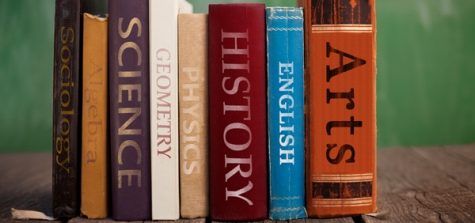Regeneron Semifinalist: Christina Ping
Christina Ping is one of the eight BCA semifinalists of the Regeneron Science Talent Search, formerly known as “Intel.” The Chronicle was lucky enough to catch up with her and find out more about her research, motivations, and reflections on the experience.
For more information on the Regeneron Science Talent Search, and links to interviews with seven of our other semifinalists, read “Regeneron Science Talent Search: BCA Boasts 8 Semifinalists.“
Can you explain your research?
The goal of my project was to use somatic cell fusion to fuse a photosynthetic algal cell with a human thyroid cell in order to create a photosynthetic human hybrid capable of self-sustenance and production of human proteins. The rationale behind this was to create an alternative method of producing biologics medication (biomolecules that are used for medication, such as insulin) that is low-maintenance and inexpensive.
Currently, there are three major methods of making biologics medication: artificial synthesis, recombinant DNA technology, and extraction/purification from animal glands. The problem with artificial synthesis is that the method cannot be used for molecules with unknown synthesis routes. Recombinant DNA requires the introduction of human protein genes into bacteria, but bacteria cannot carry out all the complex modifications needed for proteins to be fully-functional. Extraction/purification from animal glands involves the use of animal forms of proteins, which are not 100% identical to the human forms; as a result, some patients will develop immunogenicity (an allergy) to the molecule.
I wanted to create a method of synthesis that addressed all of these issues by having photosynthetic human hybrids that can produce their own glucose fuel-source, as well as the human versions of the protein molecules that are needed for medication.
How did you get the idea for your project? Is it personally important to you?
I got the idea for the project after taking Dr. P’s ResMol class. He talked about cell fusion as a laboratory technique, and the different applications of it.
My research specifically used thyroglobulin as a model of the idea of fusing algae and human cells together, which is important to me because my aunt herself has had some issues with her thyroid gland, and so research into thyroid hormones and how to produce them in alternative ways for these patients was something that was personal to my life.
What was the biggest challenge you faced while doing research?
The biggest challenge I faced while doing research was learning to deal with scenarios when the results of your experiments do not come out the way you expect and hope. Dealing with setbacks forced me to become a more creative problem-solver.
One of the issues that I encountered was how to create an environment to culture my hybrids in. Photosynthetic humans clearly don’t exist in real life, and researchers have not worked with them before in the lab. It was necessary to figure out for myself what conditions to grow them in.
Did I need the same carbon dioxide levels as normal human cells? What about temperature or nutrient levels? I ended up using the tissue culture incubator with a small, velcro-attached flashlight. The trial-and-error process was highly valuable to my development as a researcher.
How did it feel to win the Regeneron award?
I was very shocked, surprised, and happy. I wasn’t expecting to be named a semifinalist, so it was a great surprise to know. I feel extremely honored.
What did you learn / take away from the Regeneron Science Talent Search experience?
I’ve learned the importance of hard work and putting in the time and hours even if it seems like it’s not going your way. There were times when I wanted to give up as I was doing research, but this whole experience has taught me that you get out what you put in.
As long as you keep persevering and working at it, it will all work out in the end.


